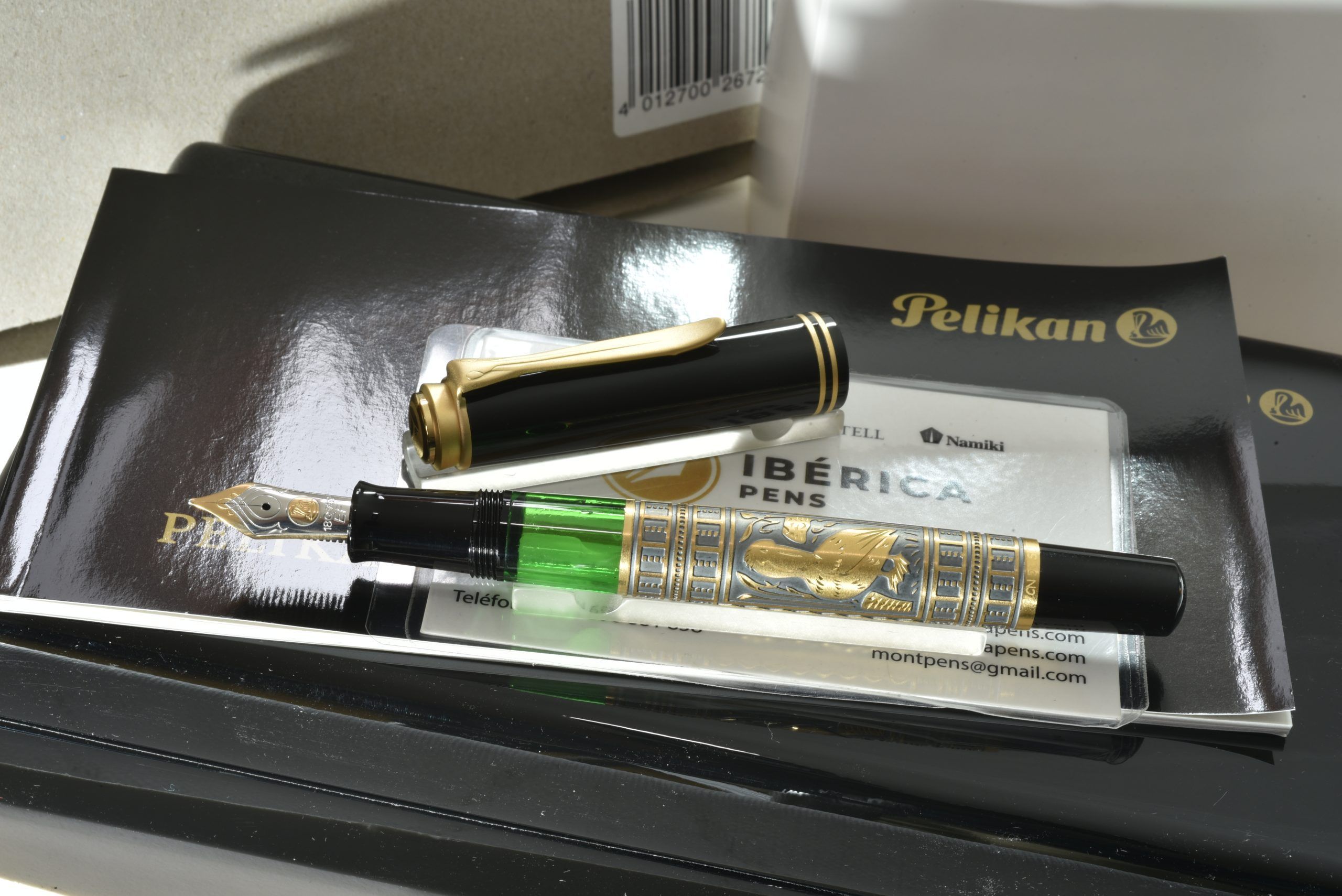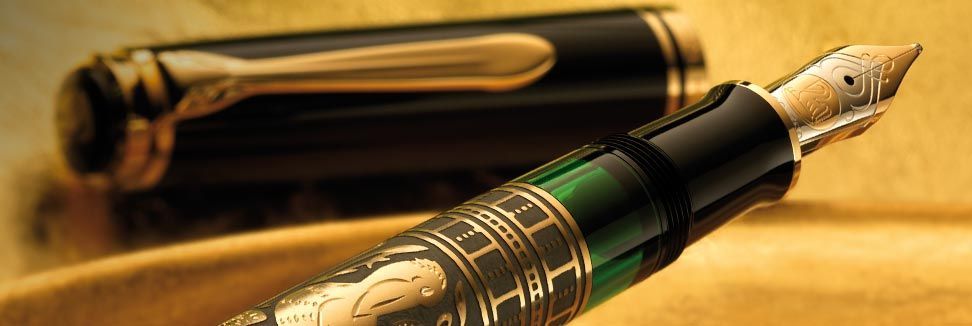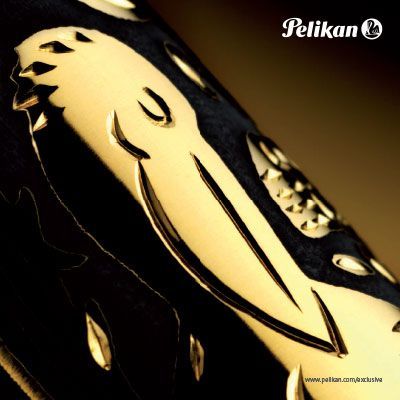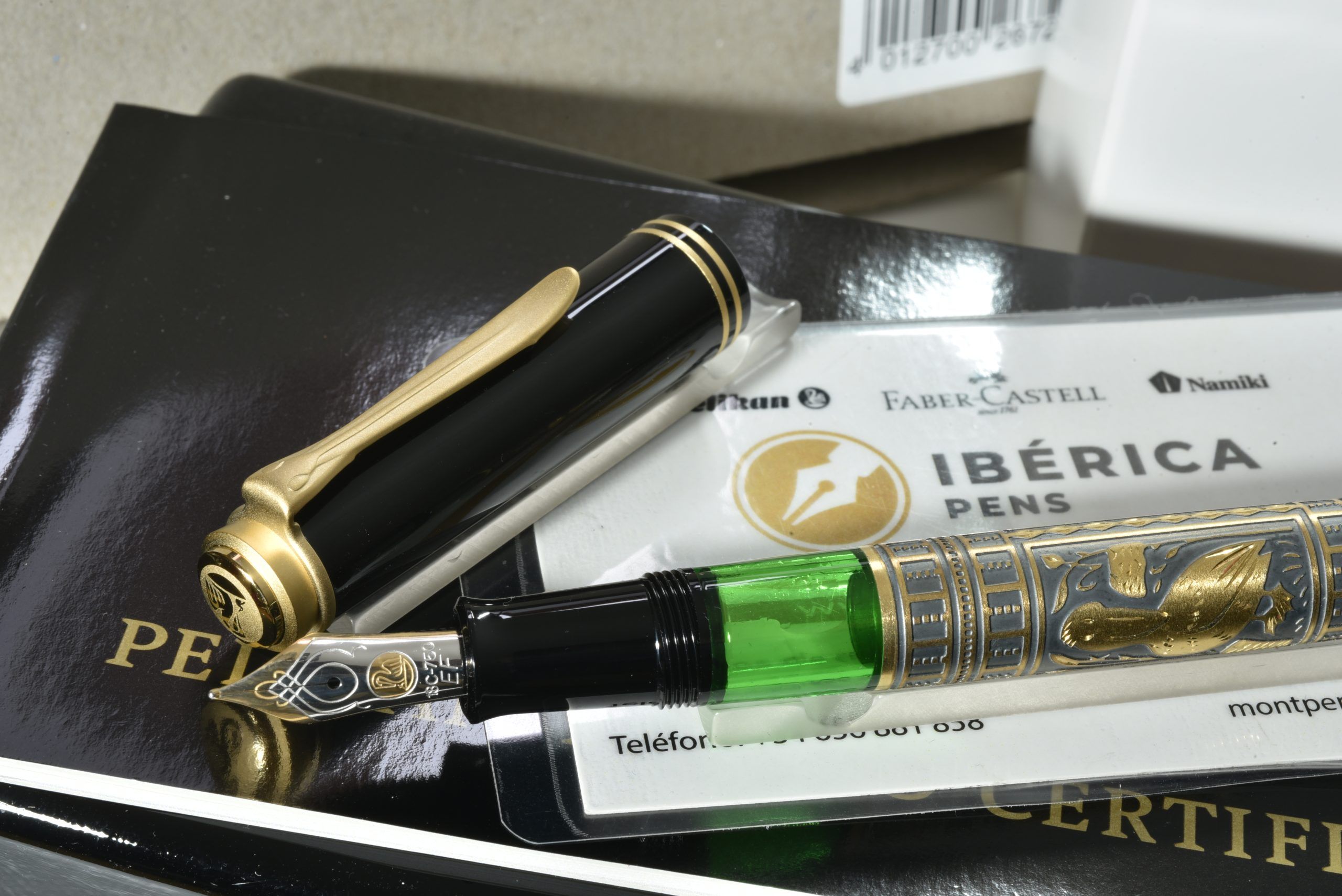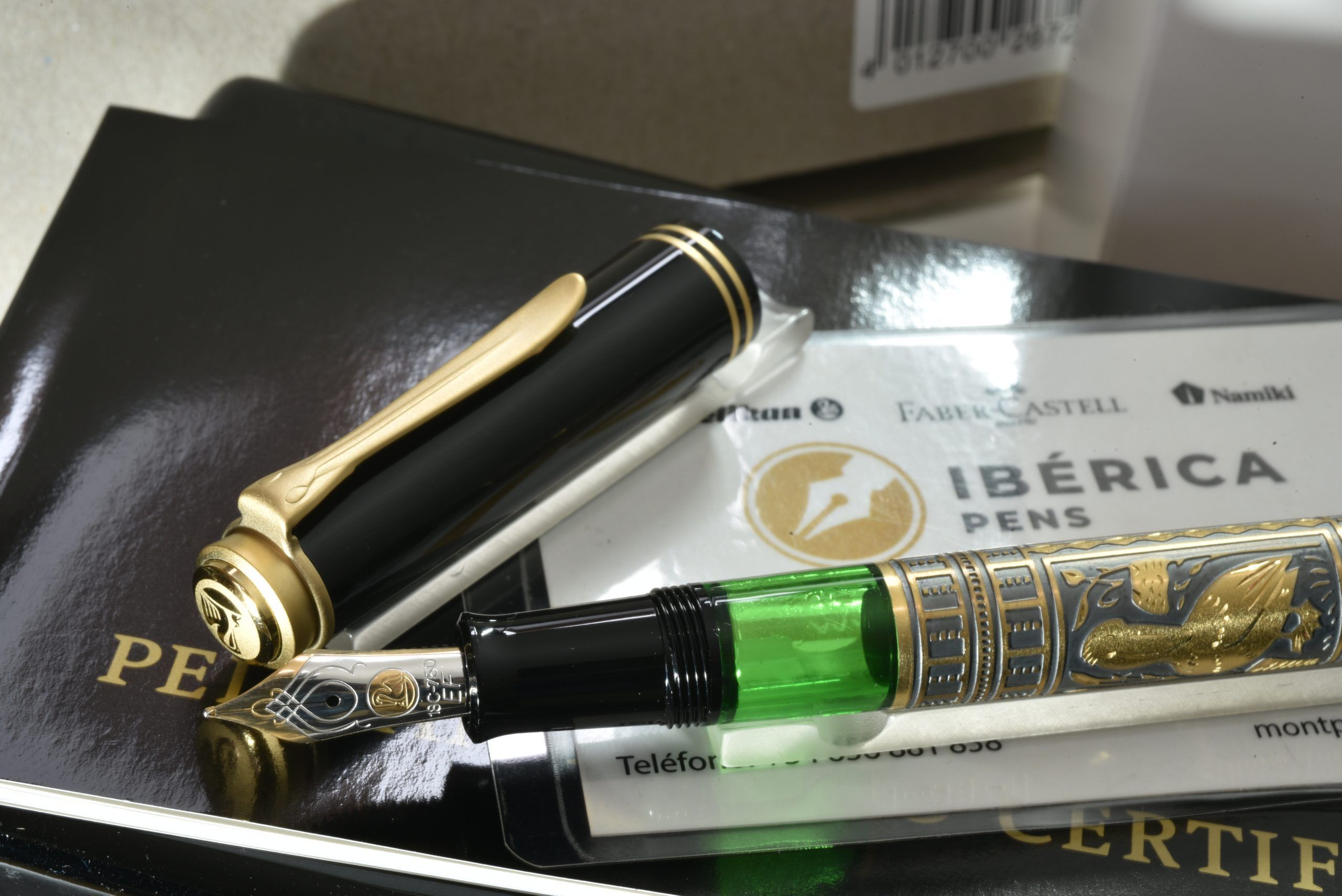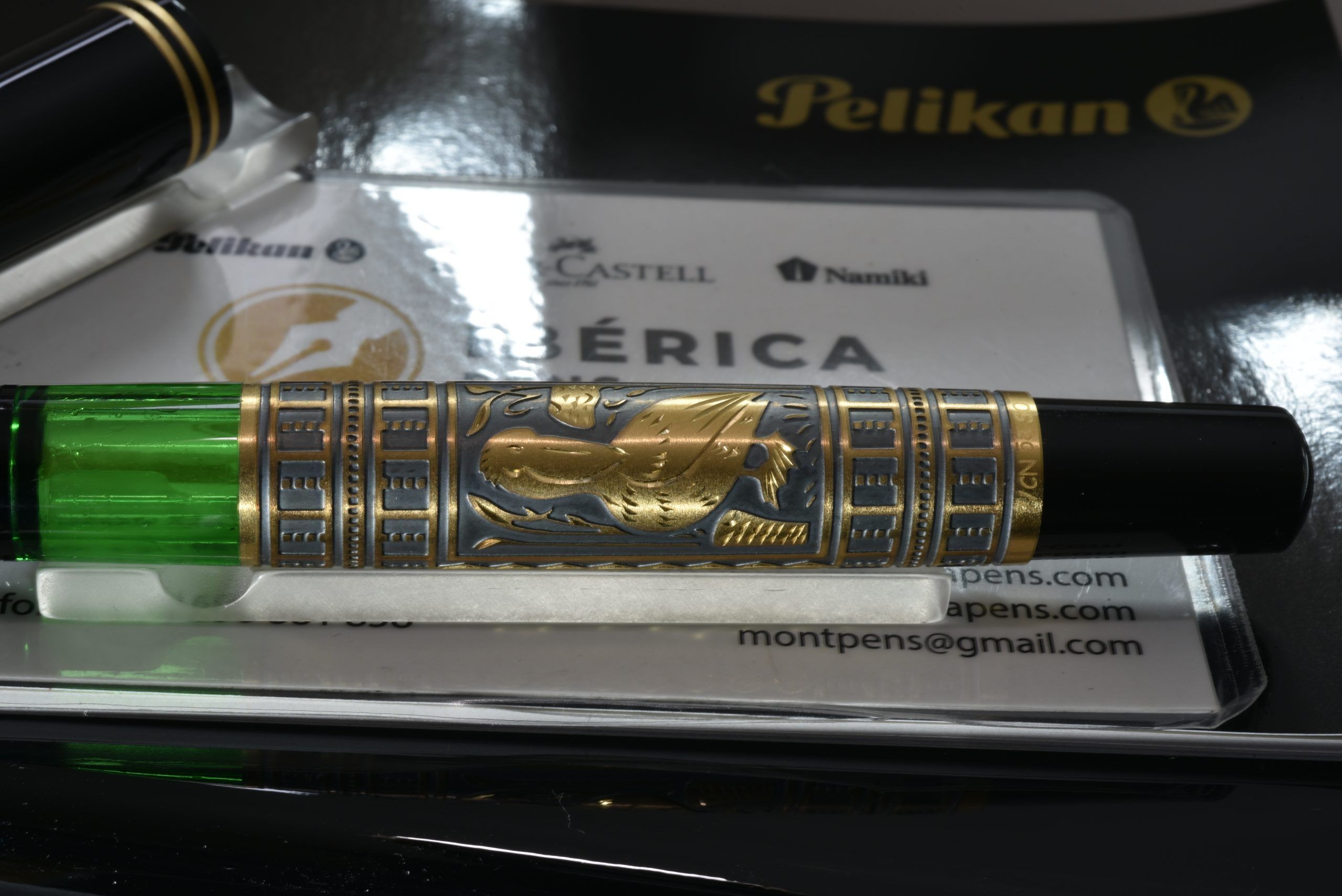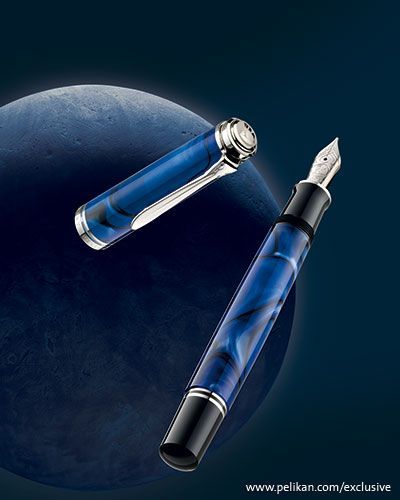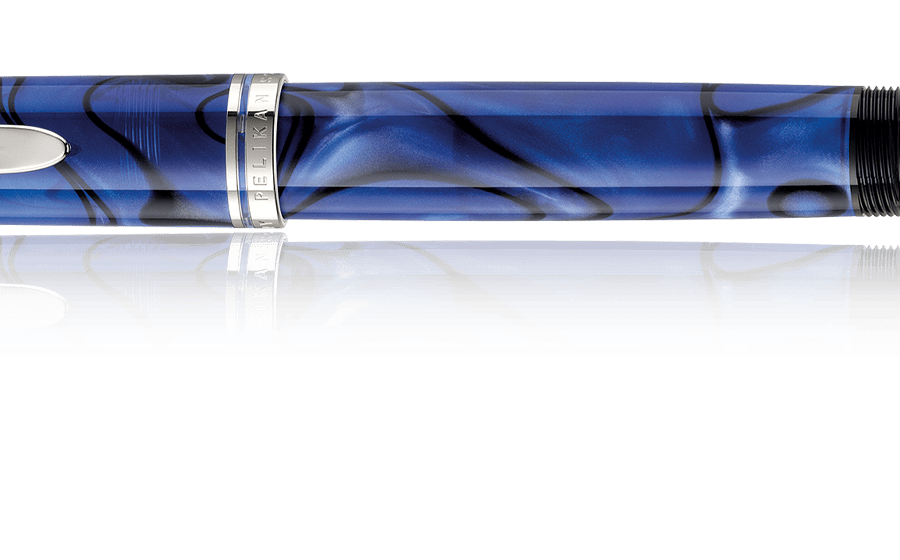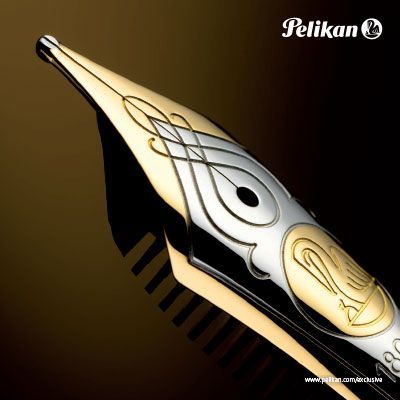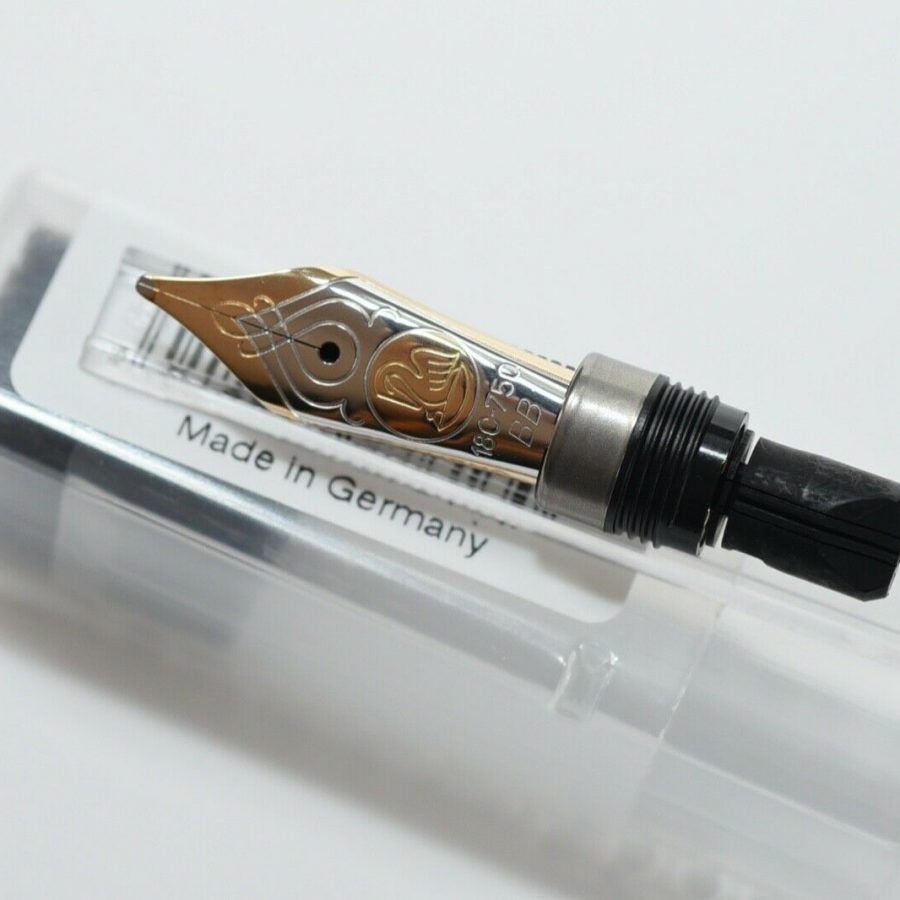Pelikan Toledo M 700 Gold fountain pen
850,00€
Pelikan Toledo – Fountain Pen M 700 gold
A fountain pen with tradition. The body made of high‑grade metal shows a hand‑carved ornament and was treated with an elaborate damascening technique
The art of working with Damascus steel goes back thousands of years. It means that steel or iron objects are decorated by engraving a pattern into the surface. Next, a thin sheet of gold will be placed over the pattern and will be embossed deep into the material with the help of a little hammer. In order to show the newly filled pattern, the object will then be heated to approximately 800°C. By doing so, the steel surfaces will oxidize and turn black, while the gold starts to shine. This technique traveled with the Arabs into Spain and has been perfected throughout the centuries, particularly in the famous Spanish town Toledo.
Out of stock
Description
Views: 71
Precious artwork in Spanish style
The art of working with Damascus steel goes back thousands of years. It means that steel or iron objects are decorated by engraving a pattern into the surface. Next, a thin sheet of gold will be placed over the pattern and will be embossed deep into the material with the help of a little hammer. In order to show the newly filled pattern, the object will then be heated to approximately 800°C. By doing so, the steel surfaces will oxidize and turn black, while the gold starts to shine. This technique traveled with the Arabs into Spain and has been perfected throughout the centuries, particularly in the famous Spanish town Toledo.
In the year 1931 Pelikan adopted this technique for the Toledo model with so much success that the design has remained virtually unchanged throughout the years. Today the decorative sleeve is made of one piece in Sterling Silver. It is treated carefully in various different steps until the motive is covered with a layer of gold (or palladium to obtain a silver surface). Every Toledo fountain pen is a unique piece made in Germany. This is because the tiny engravings in the motif are made by hand, making each Pelikan feather come alive. Due to the high amount of work, a maximum of 200 pieces are able to be created per month. The cap and front piece as well as the end piece are made of black high-quality resin.
If you own a Toledo fountain pen, you own a piece of art and a small piece of history.


 Español
Español 